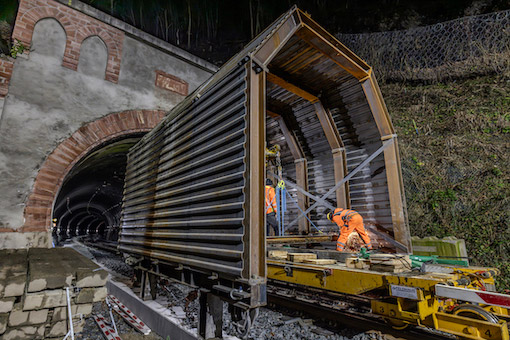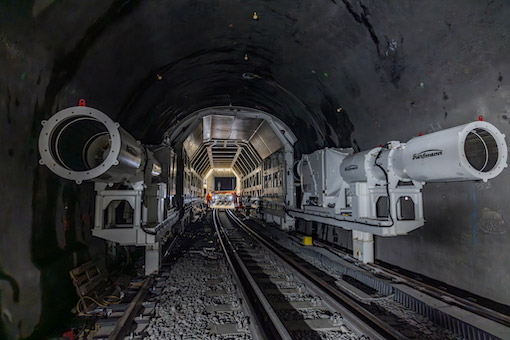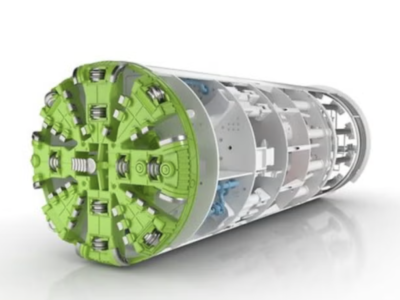
Work has commenced on developing the Fachinger and Cramberg rail tunnels in Germany.
In order to dismantling the existing structures and installing a temporary support using shotcrete, the Arge consortium of Porr GmbH, Feldhaus Bergbau GmbH and Heinz Schnorpfeil Bau GmbH is going to launch two Herrenknecht Tunnel Enlargement Systems (TES)( Nora and Tilly von Cramberg) during the next few months.
The work is being carried out on behalf of Deutsche Bahn, which is renovating and modernising six tunnels along the Lahntal line, and the tunnels will remain open to rail traffic during the works.
Being located between Diez and Fachingen, the Fachinger Tunnel is 426m-long and the Cramberger Tunnel is among Balduinstein and Laurenburg with 732m length.
The date of commencing preparatory work, such as creating the construction site facilities, dismantling the tunnel portals, installing the slope stabilisation, constructing the stop walls and installing the tunnel widening systems, was January last year and was completed in October.
Following the naming ceremony and the symbolic tapping of the tunnel in October 2023, the construction site at the western portal of the Fachinger Tunnel got under way, whereas the tunnel is due to be driven from there in the direction of Diez.
The 46m-long, rail-bound TES weight around 270 tonnes and incorporates all equipment required for the refurbishment or enlargement, including a protective canopy that separates the working area from rail traffic. Rail traffic continues to run safely on a newly laid track in the centre of the existing tube under the protection of the canopy.

The stages of starting the tunneling cycle are, demolition of the existing shell, consisting of masonry and back packing, then opening the face and breaking the rock material off. Chisels are predominantly used for this, with controlled blasting in isolated cases. Once the face has been sealed and the tunnel reveal has been secured for the first time, the outer reinforcement mesh is installed and injected together with a steel support arch. If necessary, anchors are drilled to secure the rock in the tunnel.
Also, installing an inner reinforcement layer and completing the shotcrete layer to the required thickness are the final steps, while after filling the side track with excavated material, the cycle starts again.
In an interview with T&TI last year, Herrenknecht project manager Volker Breuning said enlarging and relining a tunnel with the TES resulted in a cross-section and durability similar to a new tunnel.
At Spain in 2017, Herrenknecht supplied its first TES to a rail tunnel upgrade.
















